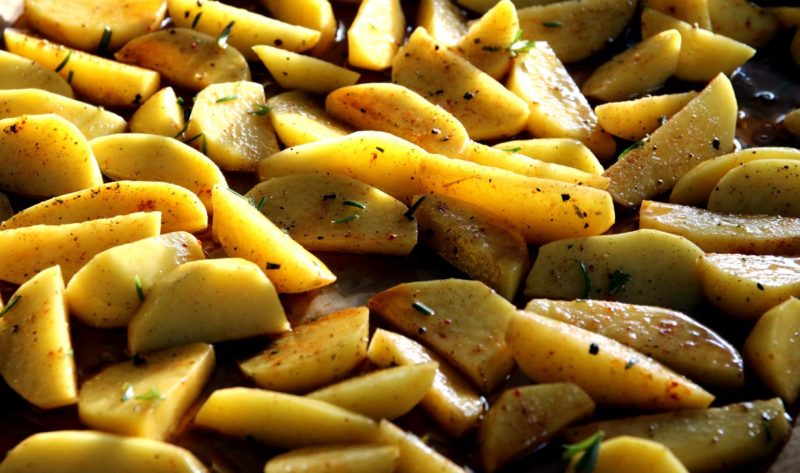When cooking baked potatoes, you may not know how to store baked potatoes in the fridge. But, all you have to do is secure a good container and make adjustments to the temperature; then, you can enjoy your snack even after a long time!
Baked potatoes are absolutely delicious delicacies that will have your mouth watering. However, there are some instances where you are unable to consume it immediately. Thus, you rely on your trusty fridge to keep your munchies safe for you.
The thing is that fridges were made for the sole purpose of storing food. The low temperatures inside the gadget give allowance for bacteria responsible for spoiling your food to slow down. However, simply putting it on the appliance is not enough to ensure long shelf life. There are other factors to consider when storing your potatoes.
My friends, without further ado, let’s start!
Ways To Store Baked Potatoes In The Fridge
You should know the different ways how you can store baked potatoes in your fridge. Here are the tips and tricks you must keep in mind when saving your baked potatoes!
#1. Plastic containers
Plastic containers are a common go-to when storing food inside fridges. Many popular companies prefer this storage method since tightly sealed plastic allows food to stay longer when unexposed to oxygen. In addition, compared to other alternatives, plastic does not react with other food components, which makes it a safe option.
To double-check, ziplock containers are even better. These tight-sealed plastics can be reused repeatedly to house your food since it has a lock and unlocks feature. The zipper is also built firmly and does not allow any unwanted particles and air to enter the food. Another bonus is prevented leakage.
#2. Avoid aluminum foil
Contrary to popular belief, aluminum foil actually makes your baked potatoes spoil faster. Foil is very common when cooking baked potatoes, so it is an important component. However, this does not mean it is also essential for storage. Storing with such wrappers can lead to botulism. Botulism forms spores that contaminate your food and eventually ruin it.
When you finish baking, remove your snack from the foil and allow it to cool until room temperature, and store it in plastic containers before placing it in your fridge. Do not place it with the foil inside your fridge or store it while it’s still hot. The sudden temperature change will spoil it.
#3. Temperature below 40 degrees Fahrenheit
The ideal temperature on how to store baked potatoes in the fridge is 40 degrees Fahrenheit. Make sure to follow this exact number. Setting your thermostat too low or too high can have negative effects on the food. In some cases, unnecessarily extreme temperatures can also have damages to your gadget.
#4. Consider cooking style
Your method of cooking can also be a factor to consider when storing. For example, you can keep plain baked potatoes with no added flavors or preservatives for an average of 1 week. At the same time, you can mix one with meat or dairy for 5 days.
How To Know If They’ve Gone Bad
Now that you have an idea of how storage goes, it can also be helpful to know whether your efforts have paid off. This way, you can avoid consuming spoiled food, find out where you went wrong in the storage process, and avoid repeating the same mistake.
Rough texture
Bad potatoes often have more blemishes and sprouts than the usual ones. When buying, the best quality potatoes are smooth-skinned and as flawless as possible. This can also guarantee long shelf life. When checking for consumption, rough-skinned potatoes are also a no-no.
Telltale signs on the exterior
Due to being an underground plant, potatoes are susceptible to blemishes and skin damage. It is common to find weird marks on the surface. Spoiled potatoes often have an unnatural amount of marks. They also tend to look awful, so you can easily identify the naturally caused ones from the signs of damage.
The formation of disgusting microbes can also be apparent in one look. For example, molds caused by unnecessary moisture in the crop are visible to the naked eye. This will make it easy to recognize and remove. If the molds have contaminated most of your food, throw it away. Unfortunately, the damage may have also seeped into the interior.
Firmness
One more thing you should check is the firmness of the tuber crop. When held, soft, mushy, and the easily damaged interior is a blatant sign that the plant overconsumption. Finally, press your baked goodie with a spoon or fork. Baked potatoes are soft due to the baking process, but an unnatural mushy feeling is a hazard.
In checking firmness, press against your snack with any available utensil. If it is unnaturally mushy, there is almost always excess moisture that will appear once pressure is applied.
Color
The easiest way to determine the quality of a potato is its physical appearance. Good to eat ones can retain a natural brown color even with varying cooking processes. The natural color will stick throughout its existence. If there are other colors, specifically green, this is proof of unwanted chemical reactions inside the food. These chemical reactions often lead to spoilage.
Conclusion
This concludes our pep talk on how to store baked potatoes in the fridge! All it takes are the right materials, and you can enjoy your baked goodie for a longer period of time. Bon appetit!

